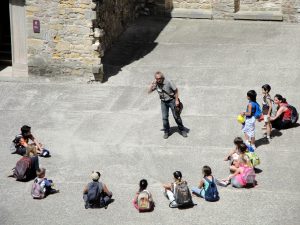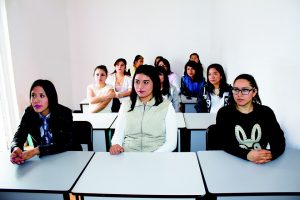Preschools Can Help To Improve A Child’s IQ How glad are we as parents when we discover that our kids are the smart type? It is the pride of any parent and that is what we all wish our kids. But for some others, every effort meant to make their kids grow up smart has been anything but a success. And their failed success could be linked to their wrong approaches. They erroneously believe that the best way to improve IQ for kids is only through memory exercises and stuff. Enrolling your child into one of the best preschools in Singapore is an important stage of your child’s education. So how do you choose one that is the best for your child? You should look at curriculum, quality of teachers and most importantly, the general ‘feel’ of the centre which you should get for yourself by going down to the centre. Check out one such preschool, Chiltern House here today.
Honestly, these exercises are not bad, but what if there are some easy ways to help your child think as smart as you wish? Would you want to leverage such measures? Interestingly, thenewageparents.com has got this to say. Improving Spatial Intelligence with Blocks Some wards are looking in the wrong direction regarding IQ building. But while we seek complex learning processes, there are play-like processes that help kids build their IQs faster, and that is what this author will glad to put us through: Puzzles, blocks, memory games, crafts, toys figurines – these are tools every child should grow up with. Give your children ample time and space to play with these tools when they are in preschool. Block and construction play is particularly important and beneficial as it gives your child multiple learning opportunities. Read more here!
One of the greatest benefits of preschool environments is that it equips kids with comfort and at the same time empowers them with knowledge. Kids are challenged when they have to make structures with play materials. When they get stuck at some point, they try to infuse their creativity to get around the situation. You mustn’t shout at them before they can learn. There are friendly and playful means through which toddlers can build up ideas in their heads. Preschool is where they get such perfect opportunity to fine-tune their IQ for the better and stand out from the pack in the future.
Developing The Child In The Various Areas Preschools are basically guided by their own objectives as per how they plan to impact kids. So different preschools with what they hope to achieve. But if you are looking for one and you don’t know what to look out for, then you need to read what childtrends.org has in mind: High-quality programs regularly collect information about children’s physical, cognitive, social, and emotional development. The National Research Councilhas published guidance on choosing and using child assessments that are appropriate for children’s developmental, cultural and linguistic characteristics. The results…Read more here! In view of the content in the above link, there is no need getting confused about the best preschools. When they are competent, they always help kids develop socially, physically, cognitively and emotionally. It’s a competitive world out there, and such settings provide the kid with the best learning resources. It is good for kids to adapt quickly to every environment they find themselves. Such quality can be easily instilled in a child when they attend preschools. Preschools teach them how to share things with others and how they can camouflage into any gathering without getting noticed. These are important qualities for any child.
How To Get Started A lot has been said on how preschools can make kids explore and optimize their learning abilities. But for a child to succeed at such places there are a couple of things the parents may need to do to get the child properly prepared for preschool. Huffpost.com gives us their perspective of the subject: Before starting preschool, playgroups are the closest thing to replicate a preschool environment. Think of it as a soft introduction: there are many other children to play with, toys to share and games to win and lose, secure in the knowledge that parents are still in attendance for the duration. I would recommend you find a playgroup…Read more here!
Perhaps, you had never given this a thought. Plus, you thought it was not all that necessary. Well you have your answer now. Playgroups provide you with the excellent opportunity to get your kid prepared for preschool. Among other things, it exposes them to other kids and adults just in time. Some kids struggle with other kids when they are initially taken to preschools. And let’s face it, if it were you, you would most likely feel the same way. So you can avoid all that by joining a playgroup. That way, your kid would have had a soft introduction before the real thing.








